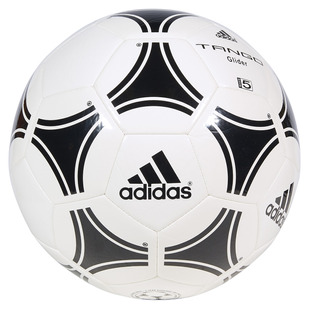How to choose your gear for the soccer season
Now that spring has at last arrived, it's time to gear up for soccer season! It’s not always easy to know which equipment you need when there’s so much to choose from: shin pads, soccer balls and soccer wear. Of course, you want to make the right choice so that you can be your best out there on the field. So here’s what you need to know!
Shoes are the most important item
Sole, construction and fit are important when it comes to choosing your soccer shoes. Nothing hurts more than having the wrong footwear.
Choosing the right cleats depends on the soccer surface you’ll be playing on. Molded cleats are perfect for dry playing fields, while studs that screw into the sole are made for slippery fields. For synthetic turfs, you need shoes specifically adapted to them.
Your position on the field will also determine your type of shoe. Defenders need solid, thicker shoes, while midfielders and forwards need a lightweight pair. You’ll also want to move up a shoe size, as soccer shoes are smaller and the soles are thick.
Finally, whatever model shoe you choose, make sure to always dry and air out your shoes after practicing or playing, especially after a rain. Regular maintenance of your shoes will guarantee that they last longer!
Shin guards that fit
Because your shins are always in the middle of the soccer action, proper shin protection is essential. Again, your position on the field determines the type of shin guard you need. Defenders, of course, need the most effective protection. Midfielders need rugged, durable shin guards while attackers need simple, lightweight models to give them greater freedom of movement.
Once you’ve determined the model you need, make sure to choose the right size, the proper amount of leg area that needs protection and the type of support for the pads.
Soccer wear for any kind of weather
Whether it’s for practice or a game, your soccer wear should not be left to chance. You want your movements to be as free as possible in any season, while having an outfit that suits the weather conditions. It’s all about the jersey, the shorts and the socks.
The jersey should be snug on the body and the shorts a little more ample. In both cases, choose a very flexible material for easy movement. Don’t forget to choose breathable, water-resistant jerseys so that you can push yourself to the max yet always be comfortable! And don’t neglect the socks. The best models have mesh uppers for better breathability.
When it’s a little colder outside, you’ll want to slip on an undershirt. Its role is not only to evacuate perspiration to keep you dry in any circumstances, but also to keep in your body heat. The right under-gear is an important asset in chilly weather!
For practices or before and after games, complete your soccer outfit with slip-on pants and a training jacket that will keep you cozy while leaving you freedom of movement!
Choosing the right ball
At last, we come to the soccer ball! There are three sizes of balls, including two for children. The youngest players (U6-U8) play with a size 3 ball, which is 57 to 60 centimetres in circumference. Kids nine to thirteen years old (U9-U13) play with a size 4 ball, which measures between 63 and 66 centimetres. Finally, teenagers and adults (U14-senior) play with a size 5 ball that’s 68 to 70 centimetres in circumference.
Other factors that need to be considered are the material it’s made of and how it’s made. A machine-stitched ball is perfect for beginners, while it’s important to choose a hand-stitched ball for drill-heavy practice and a thermal-bonded ball for competition.
Now that you’re all geared up to go, you just have to get out there on the field. Have a great game!












